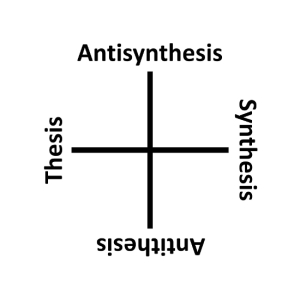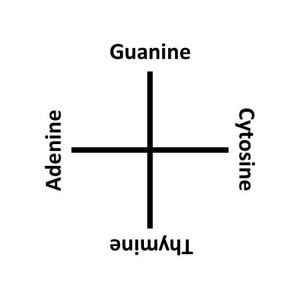 In a mechanism, analysis coincides with antisynthesis.
In a mechanism, analysis coincides with antisynthesis.
— From Life Itself, by Robert Rosen
The triad thesis-antithesis-synthesis has been erroneously credited to Hegel, but it still widely mentioned. What if the triad becomes a fourfold? Then the first term that comes to mind to turn three into four is antisynthesis. The writer most familiar to me who used this term was Robert Rosen, a theoretical biologist.
Rosen thought that antisynthesis was analysis for what he calls mechanisms. Mechanisms are natural systems such that every one of its models is simulable, that is, computable as in a computer. One of Rosen’s main claims in his research was that living systems were natural systems but not reducible to mechanisms. His argument depended on an analysis of the causation or entailments in such systems.
Because so many of the fourfolds presented here are linked to Aristotles’s Four Causes, I feel that I may need to revisit Rosen’s Theory in a separate entry to do it justice. This entry was merely about the term antisynthesis and its relation to the original triad.
Notes:
In this fourfold there are two negations and two affirmations.
Hegel instead used concrete, abstract, absolute. To complete the four: bounded, partial, uncertain, finite?
References:
http://en.wikipedia.org/wiki/Thesis,_antithesis,_synthesis
Robert Rosen / Life Itself: A Comprehensive Inquiry into the Nature, Origin, and Fabrication of Life
[*7.119]
<>

